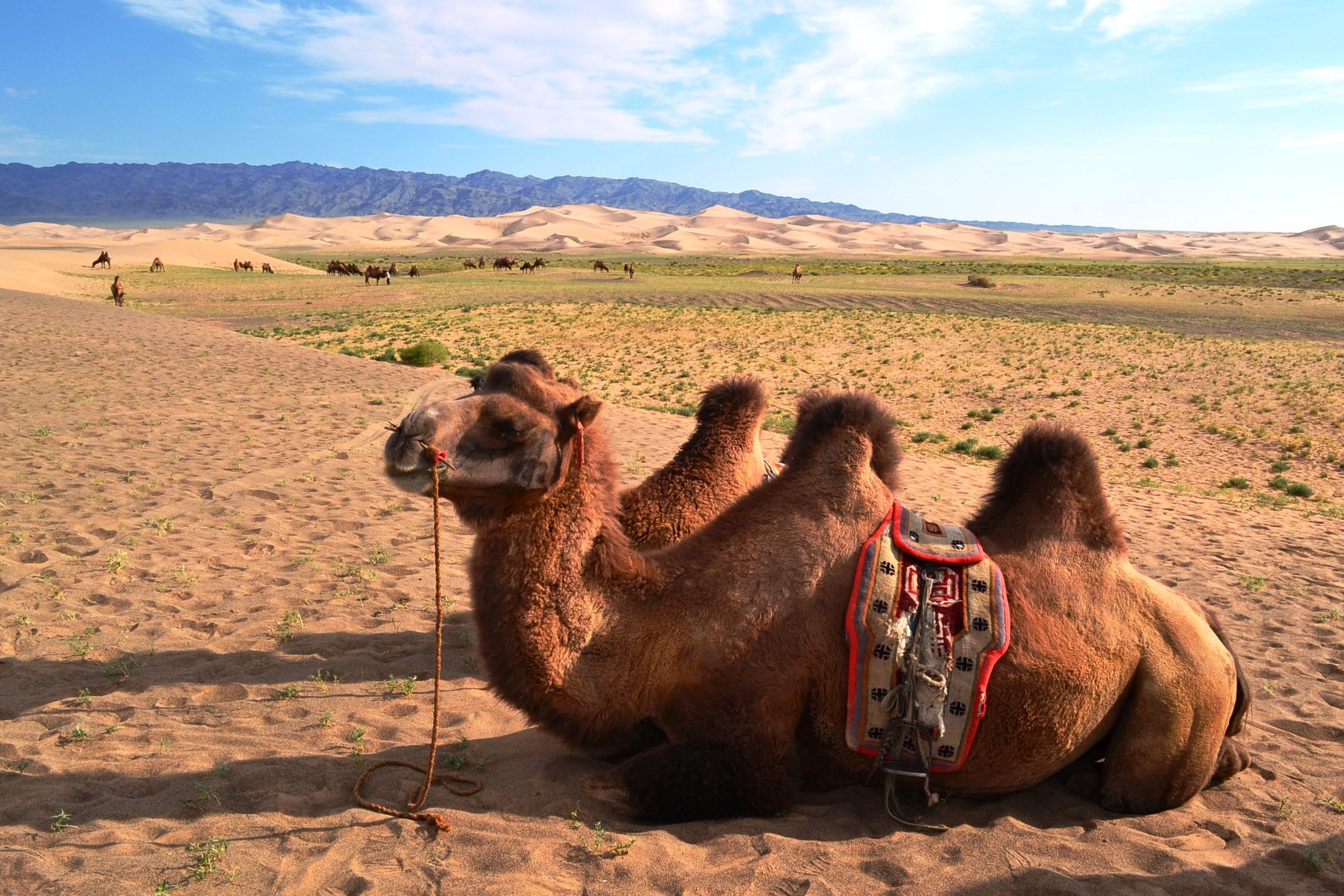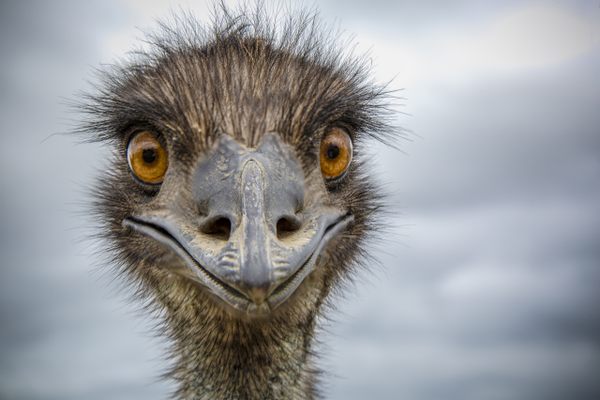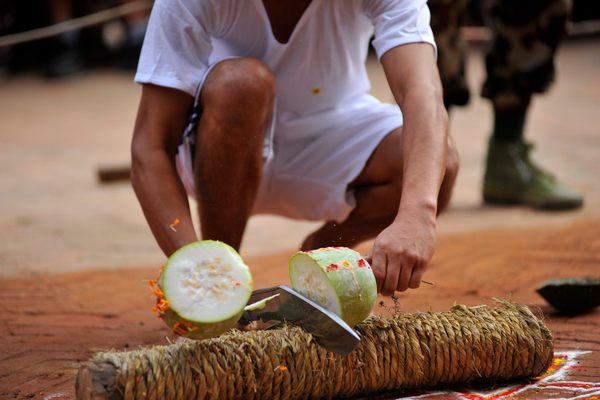The Transcendental Ritual of Mongolian Camel Coaxing May Soon Be Lost Forever
Khuus, khuus, khuus.

Springtime in the Gobi is as life-giving as it is treacherous. As the -45-degree lows of winter yield to 100-degree summertime highs, the traditional livestock of the area’s Mongolian herders start to give birth. Risks are many. Shaggy Bactrian camels (two humps!) are pregnant for 13 months, and usually give birth to a calf every second year. But the harsh, dusty climate is unforgiving, and it is not uncommon for mother or baby to perish during or after delivery. The result is often orphaned babies and grieving mothers who need one another—but don’t have any filial bonds.
After centuries in the desert, the nomadic herders have developed a unique musical ritual to help form these bonds, or reestablish one when a camel mother has rejected her own offspring. In the half-light of dusk or dawn, a musician wields his instrument, usually a horsehead fiddle, known as a morin khuur, or a Mongolian flute. Everyone present wears their best clothes, out of respect for the rite. The mother and calf are tied together, and, on the orange dunes, another musician begins to chant: “khuus, khuus, khuus.”
At first, observers say, the mother either ignores the calf altogether or lashes out by biting or spitting at it. The “coaxer,” at this point, adjusts the melody based on the behavior. The singer begins to weave elements of poetry or song into the tune, to mimic the sound of the camel’s walking, running, and bellowing. After many hours of this, it is said, the mother and calf begin to weep. The spell is cast, and the animals are joined for life.

This is the basic outline of the ceremony, according to information submitted to UNESCO in an attempt to recognize and safeguard the unique practice. Other aspects may be added or omitted, depending on how hostile the mother camel and calf are. Sometimes, herdsmen cover the orphan calf with the pelt of the mother’s dead offspring, or tie the two together overnight far from the rest of the camp. Camels can’t fit inside the Mongolian gers, also known as yurts, that herders live in, but as part of the ritual the animals are sometimes brought to the entrance and shown the fire inside. Previously, the anklebones of wild sheep were tied around the camels’ necks, based on the myth that these ewes never reject their babies. These wild sheep are now endangered, and their anklebones surpassingly rare.
There is a mystical element to this ritual, explains Galiimaa Nyamaa, a professor at the Mongolian University of Science and Technology in Ulaanbaatar. “It asks the gods of animals and humans and spirits of nature to help people,” she says. “The coaxer and owner of camel ask the gods for a blessing and protection from natural disasters and other deities.” Elders believe that the ritual has an allegorical significance as well, relating to the importance of patience and acceptance in any relationship.
This ritual doesn’t just save the baby’s life, but also ensures the herders a steady stream of camel milk, for as long as the mother is nursing. “The camel milk is not only the source of food and drinks in the severe Gobi conditions,” says Nyamaa. “It is also the basic means of preventing illness or for healing diseases.” (Curiously, some American consumers have recently begun turning to this creamy elixir for relief from autism, head colds, and diabetes.)

The Gobi stretches over an area about twice the size of France, spanning much of the Chinese provinces of Xinjiang and Inner Mongolia, and the southern band of Outer Mongolia, where this ritual takes place. Almost nothing grows on this spectacular expanse of sand, mountains, and arid plains, stripped of rainfall from the Indian Ocean by the Tibetan Plateau. Its tiny population has therefore rejected agriculture for the demanding life of nomadic herding. Each family has its own caravan of a few hundred camels.
Each year there are fewer and fewer young herders willing to learn and pass on this tradition. Summer droughts between 1995 and 2005 chased a series of cataclysmic winter blizzards, which wiped out much of the livestock. After the 1990 revolution and the peaceful resignation of the then-authoritarian government, Mongolia has begun to prosper—but miners earn far more than herdsmen, and the country’s flourishing urban centers are a seductive alternative to a nomadic life. Between 2003 and 2013, for instance, the number of herding households in Mandal-Ovoo province decreased by 37.5 percent, from 488 families to just 305.
There is also a growing trend among Mongolian families of sending daughters away to study and live in cities, and those who leave almost never return. The young men who remain in the desert plains struggle then to find wives and raise families that can help with the livestock and maintain the traditions. On top of that, many have discovered that motorbikes are cheaper and less tempestuous beasts of burden than camels. All of this, coupled with climate change, are eroding the traditional way of life and the landscape itself.

Particular aspects of the ritual are passing from use as well. Traditional Mongolian instruments are falling from favor. The vargan, a plucked “jaw harp,” hasn’t been used for camel coaxing in 20 years, and certain kinds of flute are relegated only to theater and performance, rather than an intricate dance with livestock. The practice has been documented by filmmakers, including in the 2003 German-Mongolian docudrama The Story of the Weeping Camel. But it’s very possible that these films may soon be little more than memorials to an extinguished art.
A few dedicated Mongolians, including Nyamaa, have petitioned the United Nations to safeguard this practice. In 2015, they added it to their “List of Intangible Cultural Heritage in Need of Urgent Safeguarding,” but it’s hard to know what impact this can have beyond recognizing the existence of the practical yet transcendental ritual. In a video statement to the United Nations, one aging coaxer, Ch. Perlee, tried to explain the beauty of “the gentle sound of ‘khuus’” coupled with the melody: “Even people who are looking at the ritual start to cry.”

















Follow us on Twitter to get the latest on the world's hidden wonders.
Like us on Facebook to get the latest on the world's hidden wonders.
Follow us on Twitter Like us on Facebook